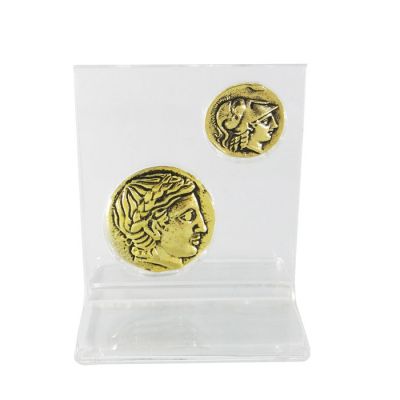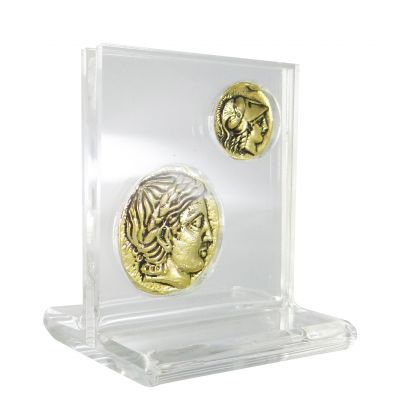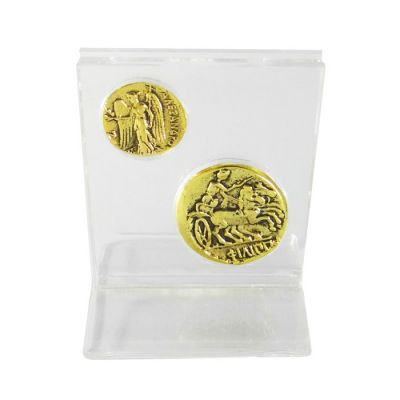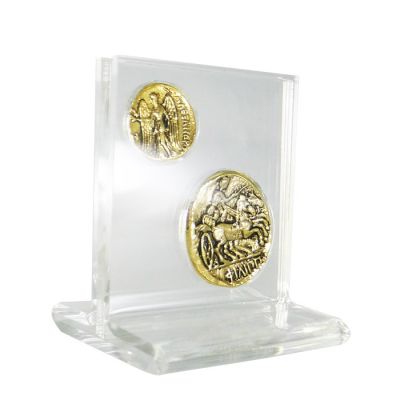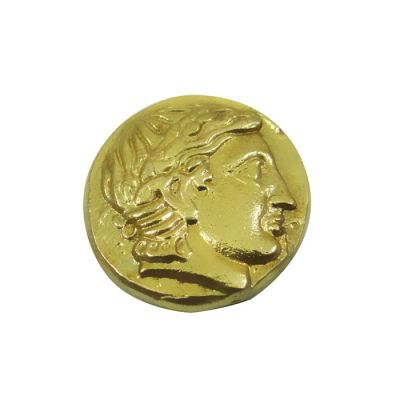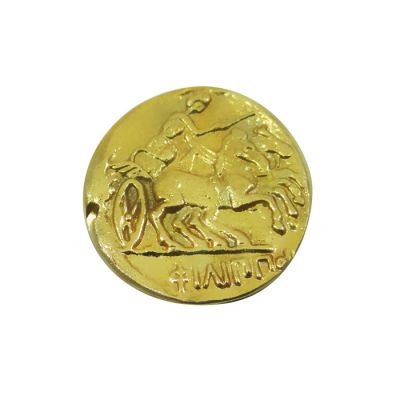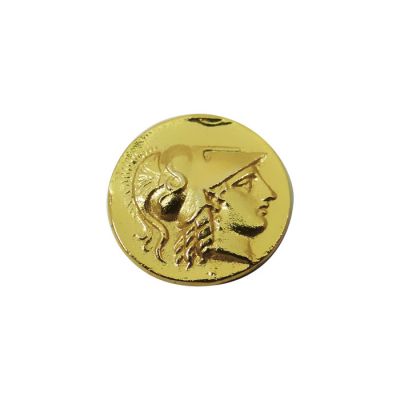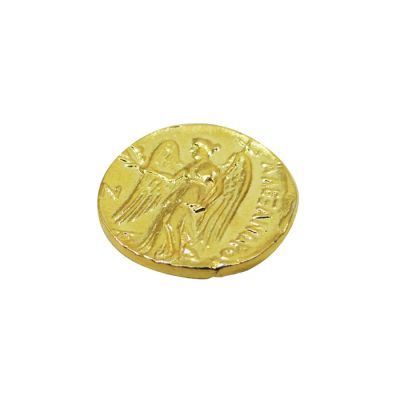A set of two Macedonian gold coin replicas, in handmade solid gold-plated 24K brass, is an ideal gift for the admirers of the ancient Greek world, but also for coin collectors and history lovers. The two gold staters from the Kingdom of Macedon were minted in Amphipolis in Greece.
The gold stater of Alexander the Great (Alexander III of Macedon), dated to 336-323 B.C. depicts the head of Athena facing right and wearing a crested Corinthian helmet, decorated with a coiled snake on the obverse and on the reverse, it features Goddess Nike standing, holding a wreath in her left hand and a stylus in her right hand. It also bears the inscription ALEXANDROU (ΑΛΕΞΑΝΔΡΟΥ) in the right field.
The gold stater of Philip II of Macedon, circa 340-328 B.C., depicts the laureate head of Apollo, facing right. The reverse side of the coin depicts a charioteer, wearing a himation and holding the reins, driving a two-horse chariot. It also bears the inscription PHILIPPOY (ΦΙΛΙΠΠΟΥ) at the bottom. The four-coin set is made of gold-plated brass and it is offered in an acrylic case for protection and better presentation and gift packaging.
Diameter: Alexander's III stater: 2 cm | Philip's II stater: 2,7 cm
Dimensions of the case: 5 cm x 6 cm x 5 cm
Take a look at the rest of the coins collection.
All prices include VAT.
Minting of coins by the Macedonian kings began at Aigai circa 480 BC, during the reign of Alexander I. The standards of measure, the regions they reached, their depictions and their inscriptions attest the power of each ruler and the extent of his country's commercial relations. The metals, that were used were, silver at first, and later on, gold and bronze.
Excepting the coins of Alexander I, those of the kings who came after him, until Philip II, did not circulate beyond the borders of the state by reason of the instability which then reigned. The currency of Philip II and Alexander III on the other hand circulated widely. Furthermore, the silver coins minted during the reign of Alexander the Great were the most popular in antiquity. Under the Hellenistic kings the circulation of coins was again limited to the Macedonian kingdom and central Greece.
In the Classical period the royal coins, of excellent artistic quality, were decorated with traditional or contemporary subjects, attesting their issuers' attempts to connect their origins to the mythical progenitor of their dynasty.
In the Hellenistic period the subjects were clearly chosen for the purposes of propaganda, while a novelty was the introduction of realistic portraits of the monarchs. The Successors also instituted the inscription of the royal title on the coins, which was not the case with the previous royal mints.
The gold stater of Philip II of Macedon, was minted at Amphipolis, circa 340-328 BC. It depicts the laureate head of Apollo, facing right. The reverse side of the coin depicts a charioteer, wearing a himation and holding and the reins, driving a two-horse chariot. It also bears the inscription PHILIPPOY (ΦΙΛΙΠΠΟΥ).
The gold stater of Alexander the Great (Alexander III of Macedon), dated to 336-323 B.C., was minted in Amphipolis. The obverse of the coin, features the head of Goddess Athena facing right, wearing a crested Corinthian helmet ornamented with a coiled serpent. The reverse of the coin depicts Goddess Nike standing, facing left, holding a wreath and a stylis. It also bears the inscription ALEXANDROY (AΛEΞANΔPOY).
Original ancient Greek coins are exhibited at the Numismatic Museum in Athens.
No posts found

